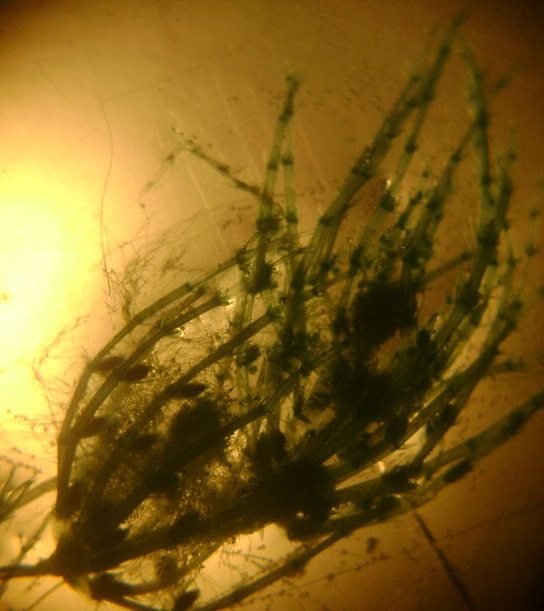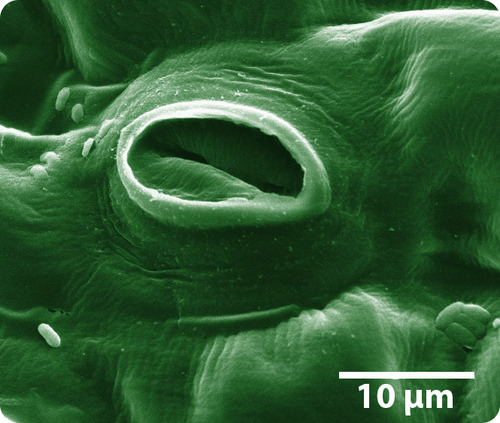7.2: Plant Evolution
- Page ID
- 2982

Where did plants come from?
Plants have not always been around on land. For a long time, life was confined to water. The first plants evolved from green algae that looked somewhat like the Chara pictured above.
Plants' Adaptations for Life on Land
The first photosynthetic organisms were bacteria that lived in the water. So, where did plants come from? Evidence shows that plants evolved from freshwater green algae, a protist (Figure below). The similarities between green algae and plants is one piece of evidence. They both have cellulose in their cell walls, and they share many of the same chemicals that give them color. So what separates green algae from green plants?

There are four main ways that plants adapted to life on land and, as a result, became different from algae:
- In plants, the embryo develops inside of the female plant after fertilization. Algae do not keep the embryo inside of themselves but release it into water. This was the first feature to evolve that separated plants from green algae. This is also the only adaptation shared by all plants.
- Over time, plants had to evolve from living in water to living on land. In early plants, a waxy layer called a cuticle evolved to help seal water in the plant and prevent water loss. However, the cuticle also prevents gases from entering and leaving the plant easily. Recall that the exchange of gasses—taking in carbon dioxide and releasing oxygen—occurs during photosynthesis.
- To allow the plant to retain water and exchange gases, small pores (holes) in the leaves called stomata also evolved (Figure below). The stomata can open and close depending on weather conditions. When it's hot and dry, the stomata close to keep water inside of the plant. When the weather cools down, the stomata can open again to let carbon dioxide in and oxygen out.
- A later adaption for life on land was the evolution of vascular tissue. Vascular tissue is specialized tissue that transports water, nutrients, and food in plants. In algae, vascular tissue is not necessary since the entire body is in contact with the water, and the water simply enters the algae. But on land, water may only be found deep in the ground. Vascular tissues take water and nutrients from the ground up into the plant, while also taking food down from the leaves into the rest of the plant. The two vascular tissues are xylem and phloem. Xylem is responsible for the transport of water and nutrients from the roots to the rest of the plant. Phloem carries the sugars made in the leaves to the parts of the plant where they are needed.

Summary
- Plants evolved from freshwater green algae.
- Plants have evolved several adaptations to life on land, including embryo retention, a cuticle, stomata, and vascular tissue.
Explore More
Use the resources below to answer the questions that follow.
- Xylem and Phloem - Transport in Plants at https://www.youtube.com/watch?v=jtuX7H05tmQ (2:27)
- Xylem and Phloem - Part 2 - Transpiration - Transport in Plants at https://www.youtube.com/watch?v=Kv_0udatlh8 (3:55)
- In what groups of plants do you find xylem and phloem? (Refer to the Plant Classification concept if necessary.)
- What does xylem and phloem each transport? In what direction do xylem and phloem transport these substances?
- What is transpirational pull? How is it key to the functioning of xylem?
Review
- How are plants different from green algae? How are they the same?
- What is the purpose of vascular tissue?
- How do plants prevent excess water loss?
- Compare xylem to phloem.
- What is the role of stomata?

